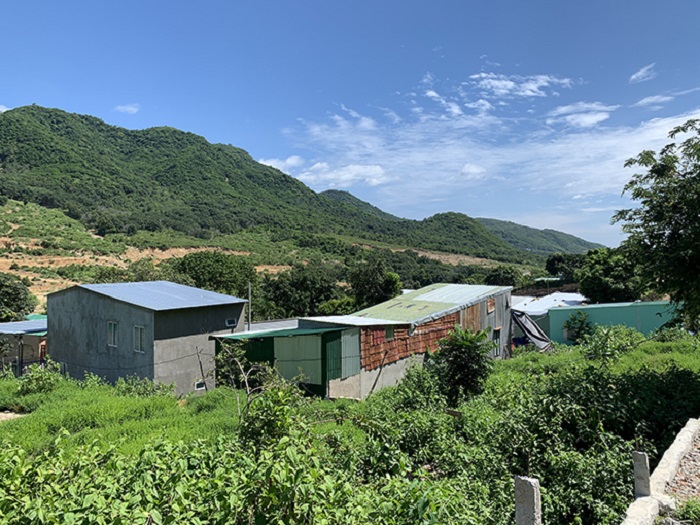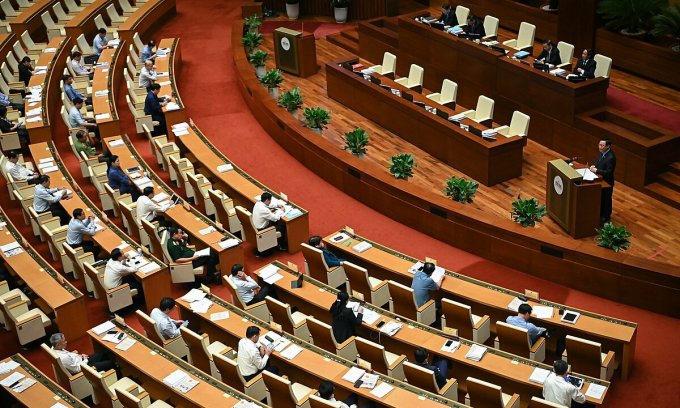Build temporary houses on land for perennial crops in Vietnam

In Vietnam, perennial crop land is so common that every province has this form of land. You can see it everywhere. Moreover, one of the most popular types of soil on the market today is the soil for perennial crops. So what is the law on land for perennial crops? So about the matter “Build temporary houses on land for perennial crops in Vietnam” Let’s find out with LSX in the article below.
Legal grounds
- Land Law 2013
- Decree 43/2014/ND-CP guiding the implementation of the Land Law
- Circular 30/2014/TT-BTNMT
What is perennial land?
Pursuant to Clause 1, Article 10 of the 2013 Land Law, land for growing perennial crops is a type of land belonging to the group of agricultural land. According to Appendix 01 issued together with Circular 27/2018/TT-BTNMT providing for land statistics and inventory, land for planting perennial crops is land used for the purpose of growing crops that are planted once. , grow and harvest for many years, including:
– Perennial industrial plant: A perennial plant for products used as raw materials for industrial production or must be processed to be used, such as rubber trees, cocoa, coffee, tea, cashews, pepper, etc. coconut…
– Perennial fruit trees: Perennial trees for products that are fruits for eating fresh or in combination with processing such as pomelo, orange, rambutan, plum, apricot, mangosteen, longan, durian, litchi, mango…
– Perennial medicinal plants are perennial plants for medicinal products such as anise, cinnamon, bean curd, camphor, ginseng…
– Other perennial plants are perennial trees for timber, shade, and landscaping (such as cypress, eucalyptus, mother of pearl, acacia, milkweed, hibiscus, sesame buds, …) ; including the case of mixed planting of many different types of perennial plants or the intermingling of perennials and annuals.
Which types of land for perennial crops are granted red and pink books?
Pursuant to Article 4 of the Joint Circular 22/2016/TTLT-BNNPTNT-BTNMT specifying the types of land for planting perennial crops to be certified as ownership, including:
• Perennial industrial plants: are plants for products used as raw materials for industrial production or must be processed to be used, such as rubber trees, cocoa, coffee, tea, cashew, pepper, coconut, etc. …
• Perennial fruit tree: is a tree that produces fruit for eating fresh or in combination with processing such as pomelo, orange, rambutan, plum, apricot, mangosteen, longan, durian, litchi, mango, etc.
• Perennial medicinal plants: are plants for medicinal products such as anise, cinnamon, bean curd, camphor, ginseng, etc.
• Trees for timber, shade trees and perennial landscape trees: is a one-time plant that grows and develops for many years such as cycads, eucalyptus, mother-of-pearl, acacia, milkweed, hibiscus, and sesame buds. …
According to the above regulations, perennial plants that are certified for ownership must have the following characteristics:
• Plants planted once, harvested for products (with the main stem remaining intact) or used as trees for timber, ornamental plants, and shade trees, having a growth period from planting to liquidation. 05 years.
• Belongs to one of the following groups of trees: trees, shrubs or climbing plants.
• Trees are woody plants, which vary in size depending on the species.
• Shrubs are trees that can turn to wood, the main stem is absent or underdeveloped, branches develop from the base of the main stem.
• A climbing plant is a tree that cannot grow upright, must rely on other trees or objects as a support or rely on organs such as auxiliary roots, branches, tendrils, and leaves to climb.
In Article 4 of this Joint Circular, the People’s Committees of provinces and centrally run cities assign the Department of Agriculture and Rural Development to assume the prime responsibility for formulating and submitting to the People’s Committees of provinces and centrally run cities for decision to promulgate a list of species Plants belonging to perennial plants are certified for ownership in the area. Based on the list of plant species belonging to perennial plants that are certified for ownership in the locality, the competent authority shall grant certificates of land use rights and ownership of houses and other land-attached assets. (referred to as red book) in accordance with the law on land for owners of perennial plants.
In fact, this list may be different because the provincial People’s Committee decides to issue it based on the opinion of the Department of Agriculture and Rural Development. Accordingly, land users must monitor and update their own local regulations to implement properly and appropriately.
Build temporary houses on land for perennial crops in Vietnam
In Article 6 of the 2013 Land Law, the principles of land use are as follows:
• Proper planning, land use plan and right purpose of land use.
• Save, be effective, protect the environment and do not harm the legitimate interests of the surrounding land users.
• Land users shall exercise their rights and perform their obligations within the land use term in accordance with this Law and other relevant laws.
Accordingly, in order to answer the question of whether to build a temporary house on land for perennial crops, it is first necessary to determine the purpose of land use according to regulations.
Land for perennial crops belongs to the group of agricultural land based on land classification according to the latest provisions of Vietnamese law. Appendix 01 of Circular 27/2018/TT-BTNMT stipulates that land for perennial crops is land used for the purpose of growing plants that are planted once, grown and harvested for many years as prescribed in this Circular. Joint Circular No. 22/2016/TTLT-BNNPTNT-BTNMT dated June 30, 2016 of the Ministry of Agriculture and Rural Development – Ministry of Natural Resources and Environment, including land for perennial industrial crops, perennial fruit trees perennials, perennial medicinal plants, and other perennial plants.
Thus, according to the provisions of the circular, the purpose of the land for perennial crops is to be used for growing agricultural crops, not for housing construction.
Procedures for converting land for perennial crops to residential land
To be allowed to build houses, households and individuals must apply for permission from the competent State agency as follows:
* Prepare documents
According to Clause 1, Article 6 of Circular 30/2014/TT-BTNMT, when wishing to change land use purpose, households and individuals must prepare 01 set of documents, including:
– Application for permission made according to Form No. 01.
– Certificate of land use right or Certificate of ownership of houses and residential land use rights or Certificate of land use rights, ownership of houses and other land-attached assets.
* The order of execution
Step 1. Submit application
Households and individuals submit dossiers at the Department of Natural Resources and Environment of the district, town or city in the province where the land is located.
Step 2. Receipt of documents
Step 3. Claim settlement
Note: During this period, the tax authority will send a notice to fulfill financial obligations, upon receiving the notice, households and individuals pay money according to the deadline and the amount on the notice (how to calculate land use fee) when changing the purpose of use is guided in the following section).
Step 4. Return the result
Time limit for settlement: No more than 15 days from the date of receipt of a valid dossier, no more than 25 days for mountainous communes, islands, remote areas, areas with difficult socio-economic conditions. The above time does not include holidays, holidays, and the time to fulfill financial obligations of land users.
Services of LSX
Prestigious professional services: Firstly, the team of consultants and consultants for many years in the field of civil status, and customer support.
On-time: Certainly, with the motto “Get your lawyer right at your fingertips”, we ensure the service always performs on time. The rights and interests of customers always come first.
Cost: Besides, LSX’s service costs are highly competitive; depending on the nature of the particular case. So, we want our guests to have the best possible service experience. Therefore, costs which guaranteed to be the most suitable and economical for customers.
Confidentiality of client information: Finally, all brand information of client LSX will be 100% confidential.
Please contact us immediately if you have any questions about “Build temporary houses on land for perennial crops in Vietnam”
Contact LSX
Finally, hope this article is useful for you to answer the question about “Build temporary houses on land for perennial crops in Vietnam” If you need any further information, please contact LSX Law firm: at +84846175333 or Email: [email protected]
Please see more
- When to pay land use tax according to Vietnamese regulations?
- Can production forest land be planted with fruit trees in Vietnam?
- Land valuation income method in Vietnam
Frequently asked questions
According to Point b, Clause 2, Article 5 of Decree 45/2014/ND-CP stipulating: When changing from agricultural land allocated by the State without land use levy to residential land, the land use levy shall be equal to the difference between the land use fee and the land use fee. land use shall be calculated at the residential land price with the land use levy calculated at the agricultural price at the time of the decision on change of purpose issued by the competent State agency.
With land use fee determined as follows:
Payable land use fee = Residential land use fee – Agricultural land use fee.
The current Land Law stipulates cases of land expropriation including:
Land recovery for defense and security purposes.
Acquisition of land for socio-economic development for national and public interests.
Land recovery due to violations of the land law (land for perennial crops cannot be used for 18 consecutive months).
Land recovery due to termination of land use according to law, voluntary return of land, risk of endangering human life.
Thus, if it is in the cases mentioned above, the land for growing perennial crops may be withdrawn. In case the land user wants to continue using it but is concerned about the possibility of expropriation, he/she must look at the planning map in his/her locality to determine if the land plot is in the area of land acquisition.
Under the regulations of Land Law 2013, one of the conditions for the transfer of land use rights is that the land is within the land use term, so the land for growing perennial crops has expired and cannot be traded.
Conclusion: So the above is Build temporary houses on land for perennial crops in Vietnam. Hopefully with this article can help you in life, please always follow and read our good articles on the website: lsxlawfirm.com




